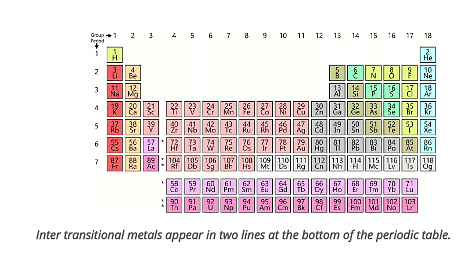4f2 electronic configuration is found in
- Pr
- Pr3+
- Nd3+
- Pm3+
The Correct Option is B
Solution and Explanation
The electronic configuration 4f2 corresponds to the ion Pr3+, which is derived from the element Praseodymium (Pr).
Neutral Praseodymium (Pr) has the atomic number 59, and its ground state electronic configuration is:
[Xe] 4f3 6s2
When it forms the ion Pr3+, three electrons are removed. These are typically removed first from the outermost orbitals (6s and 4f):
- Two electrons from the 6s orbital
- One electron from the 4f orbital
This leaves the configuration as [Xe] 4f2.
Therefore, the correct answer is option (B): Pr3+
Top Questions on Some Applications of d- and f-Block Elements
- Attempt any five of the following: (a) Cu\(^+\) is not stable in aqueous solution. Comment.
- CBSE Compartment XII - 2025
- Chemistry
- Some Applications of d- and f-Block Elements
- Out of Fe$^{3+}$, Sc$^{3+}$, Cr$^{3+}$ and Co$^{3+}$ ions, the one which is colourless in aqueous solution is:
- CBSE CLASS XII - 2025
- Chemistry
- Some Applications of d- and f-Block Elements
- Give explanation for each of the following observations:
(a) With the same d$^8$ orbital configuration, Mn$^{2+}$ ion is an oxidizing agent whereas Cr$^{2+}$ ion is a reducing agent.
(b) Atomic contraction is greater from element to element than much from lanthanides.
(c) Transition metals form large number of interstitial compounds with H, B, C, and N.- CBSE CLASS XII - 2025
- Chemistry
- Some Applications of d- and f-Block Elements
- Assertion (A): Cuprous salts are diamagnetic.
Reason (R): Cuprous ion has completely filled 3d-orbitals.- CBSE CLASS XII - 2025
- Chemistry
- Some Applications of d- and f-Block Elements
- Examine the following observations: (a) Transition elements generally form coloured compounds.
(b) Zinc is not regarded as a transition element.- CBSE CLASS XII - 2025
- Chemistry
- Some Applications of d- and f-Block Elements
Questions Asked in WBJEE exam
A quantity \( X \) is given by: \[ X = \frac{\epsilon_0 L \Delta V}{\Delta t} \] where:
- \( \epsilon_0 \) is the permittivity of free space,
- \( L \) is the length,
- \( \Delta V \) is the potential difference,
- \( \Delta t \) is the time interval.
The dimension of \( X \) is the same as that of:- WBJEE - 2025
- Dimensional Analysis
- Which logic gate is represented by the following combination of logic gates?

- WBJEE - 2025
- Logic gates
- Ruma reached the metro station and found that the escalator was not working. She walked up the stationary escalator with velocity \( v_1 \) in time \( t_1 \). On another day, if she remains stationary on the escalator moving with velocity \( v_2 \), the escalator takes her up in time \( t_2 \). The time taken by her to walk up with velocity \( v_1 \) on the moving escalator will be:
- WBJEE - 2025
- Relative Motion
- The variation of displacement with time of a simple harmonic motion (SHM) for a particle of mass \( m \) is represented by: \[ y = 2 \sin \left( \frac{\pi}{2} + \phi \right) \, \text{cm} \] The maximum acceleration of the particle is:
- WBJEE - 2025
- simple harmonic motion
- A force \( \mathbf{F} = ai + bj + ck \) is acting on a body of mass \( m \). The body was initially at rest at the origin. The co-ordinates of the body after time \( t \) will be:
- WBJEE - 2025
- Newtons Laws of Motion
Concepts Used:
Lanthanoids

Lanthanoids are at the top of these two-row, while actinoids are at the bottom row.
Properties of Lanthanoids
Lanthanoids are inclusive of 14 elements, with atomic numbers 58-71:
- Cerium - Xe 4f1 5d1 6s2
- Praseodymium - Xe 4f3 6s2
- Neodymium - Xe 4f4 6s2
- Promethium - Xe 4f5 6s2
- Samarium - Xe 4f6 6s2
- Europium - Xe 4f7 6s2
- Gadolinium - Xe 4f7 5d1 6s2
- Terbium - Xe 4f9 6s2
- Dysprosium - Xe 4f10 6s2
- Holmium - Xe 4f11 6s2
- Erbium - Xe 4f12 6s2
- Thulium - Xe 4f13 6s2
- Ytterbium - Xe 4f14 6s2
- Lutetium - Xe 4f14 5d1 6s2
These elements are also called rare earth elements. They are found naturally on the earth, and they're all radioactively stable except promethium, which is radioactive. A trend is one of the interesting properties of the lanthanoid elements, called lanthanide contraction.